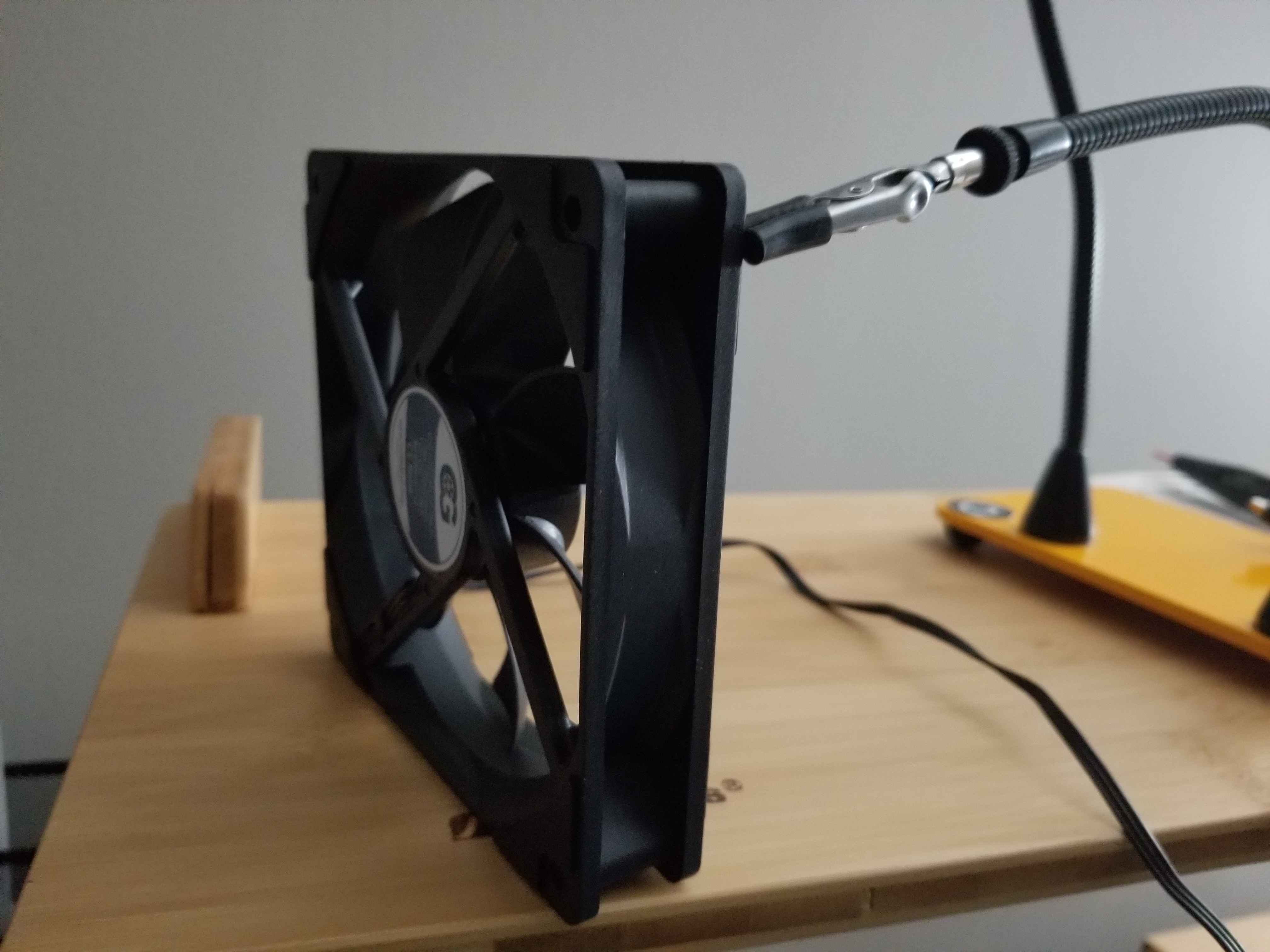
Fri 06/12/20 10:37:03 pm
Categories:
Electronics
A few measurements of a fan RPM pulse signal with an oscilloscope.
I got this fan for a simple DIY creation I will write about soon. One reason I chose this fan was the 3000 RPM spec. While researching fans I learned the yellow wire provides a pulsed signal indicating fan RPM. This signal comes from a Hall Effect sensor (and possibly some additional circuitry which varies among manufacturers). I thought it would interesting to try and measure this signal with an oscilloscope to determine the fan RPM.
Each revolution produces two pulses so 3000 RPM should produce 6000 pulses, or 100 pulses per second. Since I previously made some similar measurements of test signals I thought this would be easy. I based my circuit on this example which makes the measurement with an Arduino microcontroller.
After some trial and error I finally got the measurement to work. First, here is the fan setup:

Here is the result for a 12V power supply (using the same voltage to drive a pull up resistor on the signal):
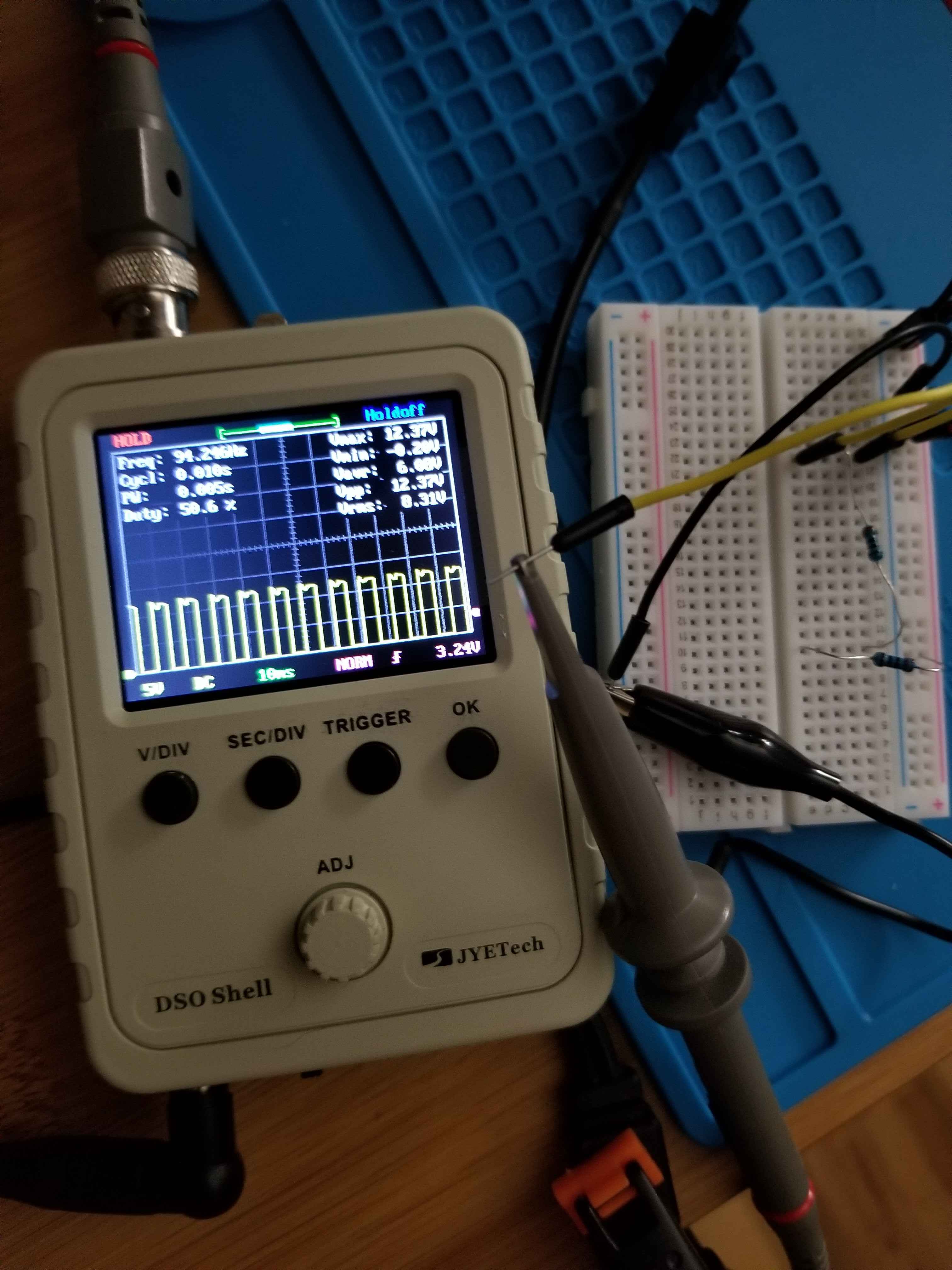
The oscilloscope measured the frequency at about 94 Hz. At two pulses per revolution this gives about 47 revolutions per second and therefore about 2820 RPM, well within the +/-10% spec. Note the max voltage is 12.37 volts.
Next, with 3.3V the frequency is about 29 Hz which gives about 870 RPM. (Again same voltage driving the pull up resistor on the signal.) There is no spec for this voltage, but I wanted this measurement for another project which I will write about soon. Here the max voltage is 3.4 volts.
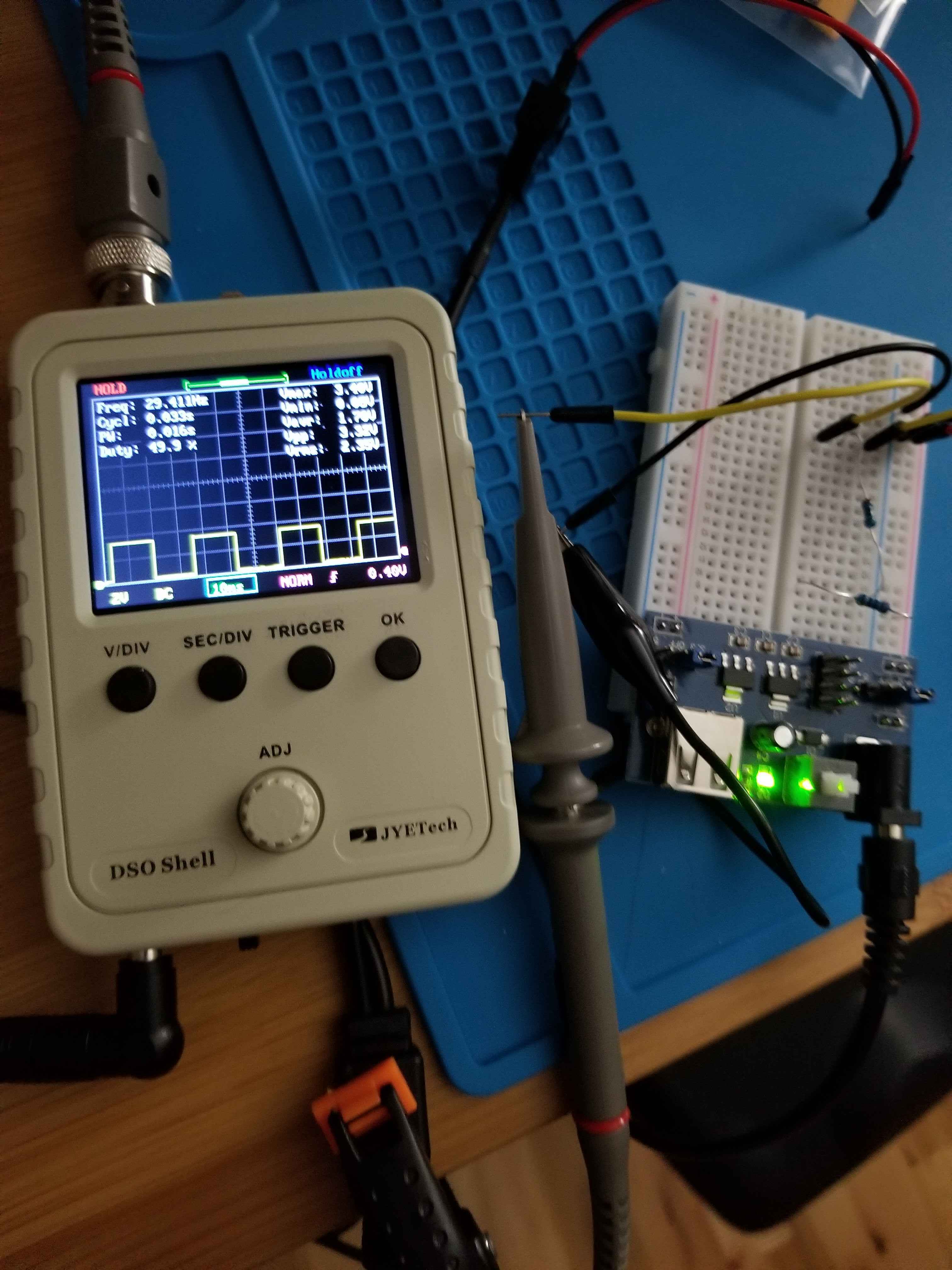
With 5V (and 5V on the pull up resistor) the frequency is about 45 Hz which gives about 1350 RPM. Again, no spec but I wanted the measurement. Max voltage is 5.11 volts.
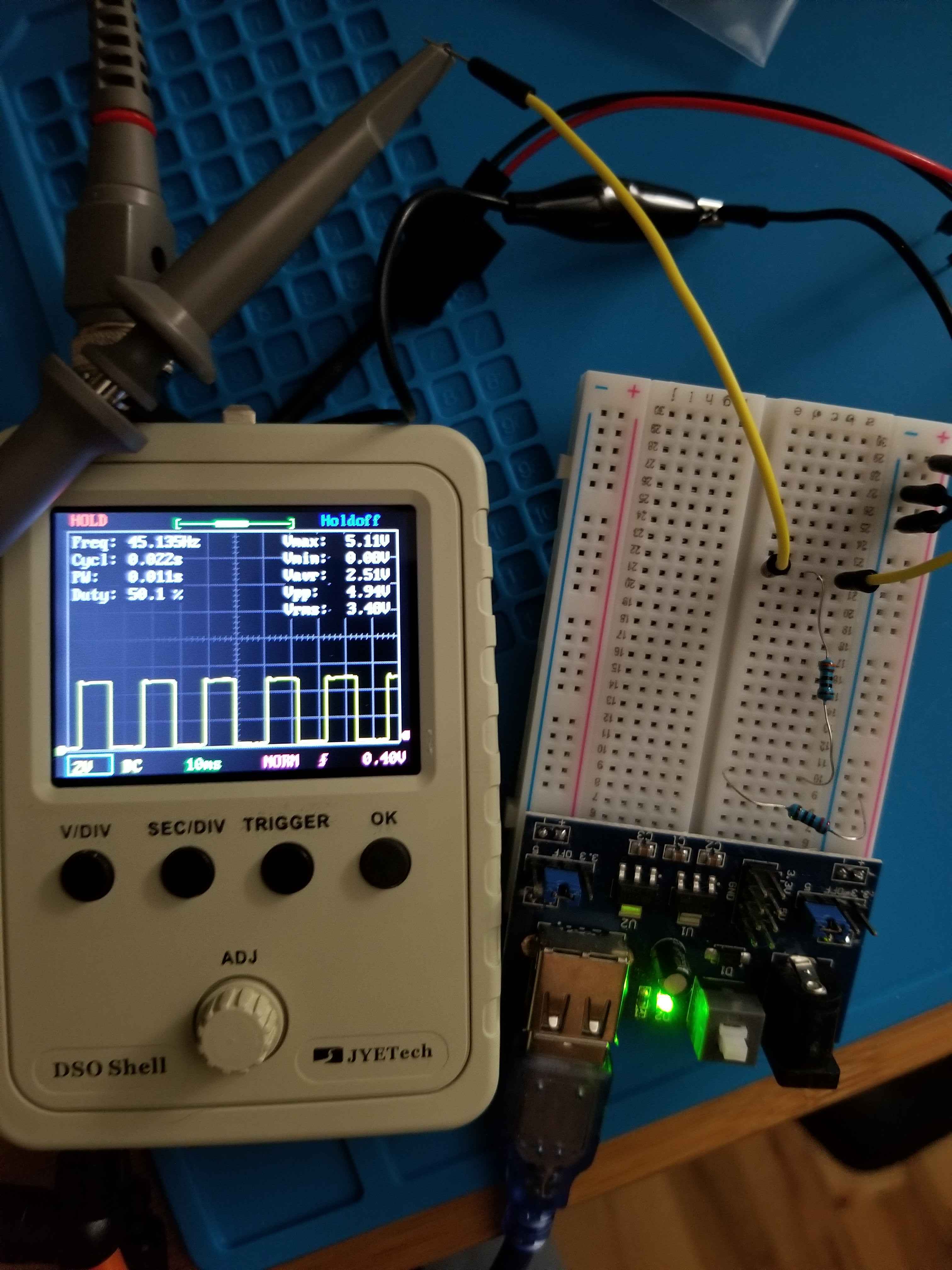
Finally, back to driving the fan with 12V, but instead of connecting the pull up resistor to the 12V source, connecting it to a 3.3V source. Frequency is again measured at about 94 Hz but now max voltage of the pulse is 3.32 volts.
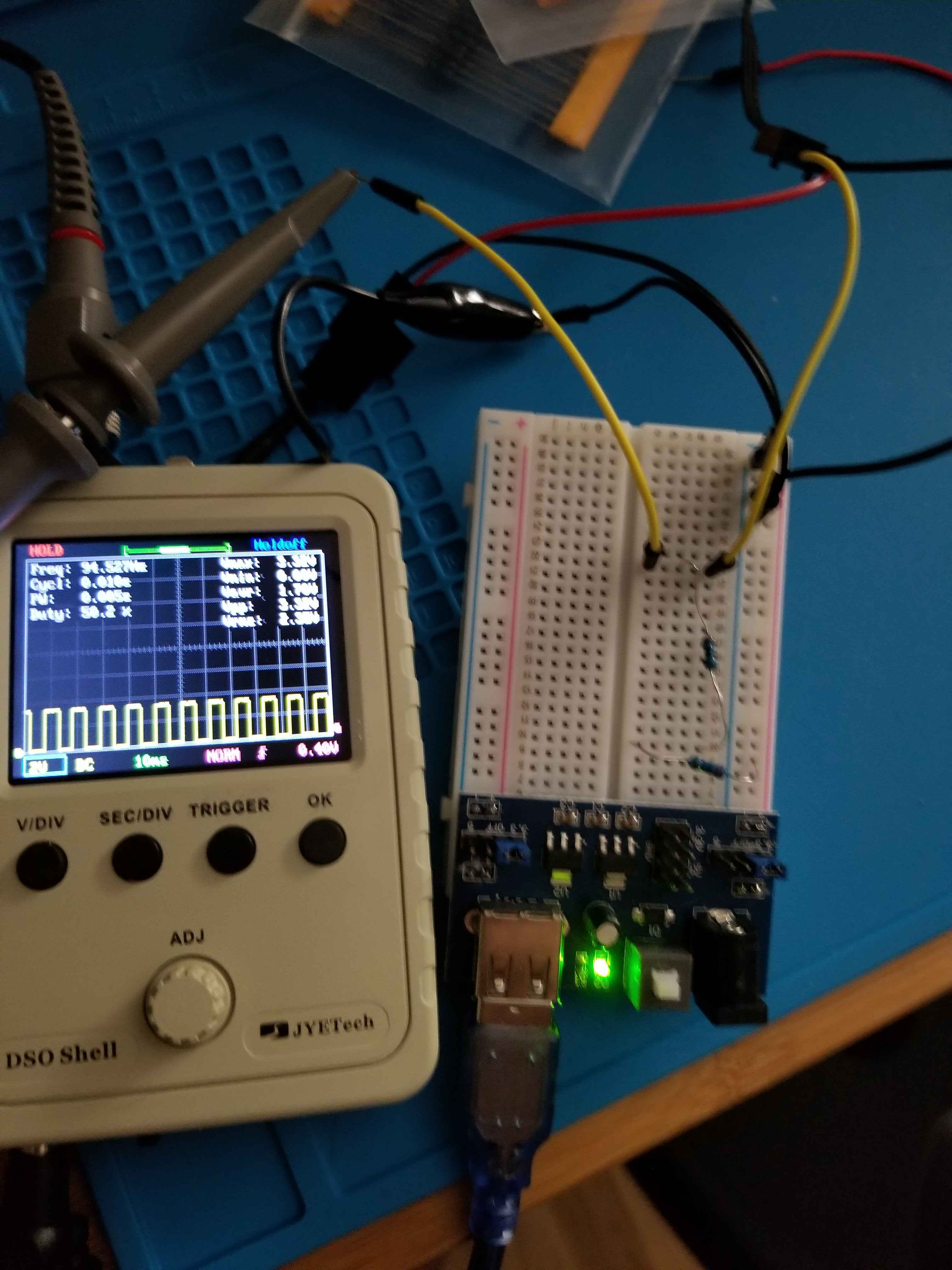
As I mentioned above, getting these measurements to work took some trial an error. There were some technical difficulties with the oscilloscope connection, and then some problems with the circuits. After reading some forums and debugging I eventually got everything to work…and was inspired to try out a couple of other related projects along the way. Those did not work but now that I have the oscilloscope measurement figured out I’m going to try them again…and of course write about them soon.
subscribe via RSS